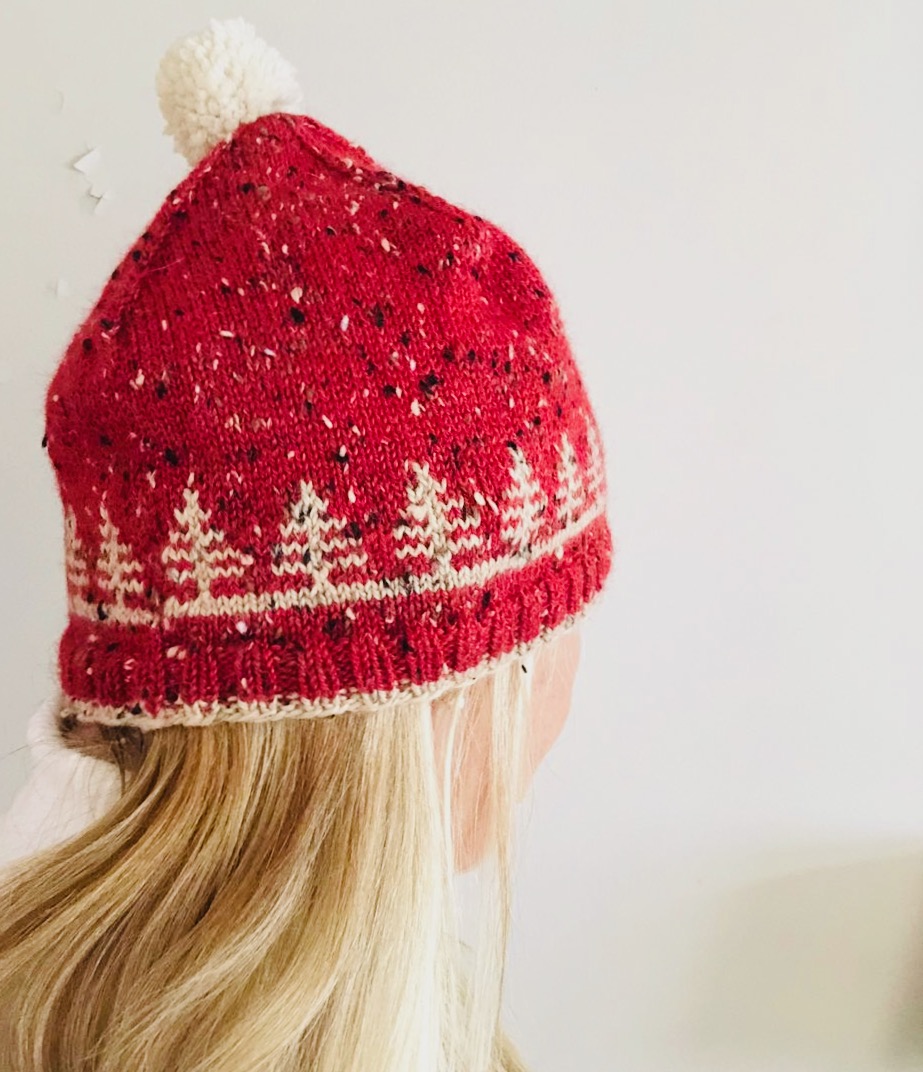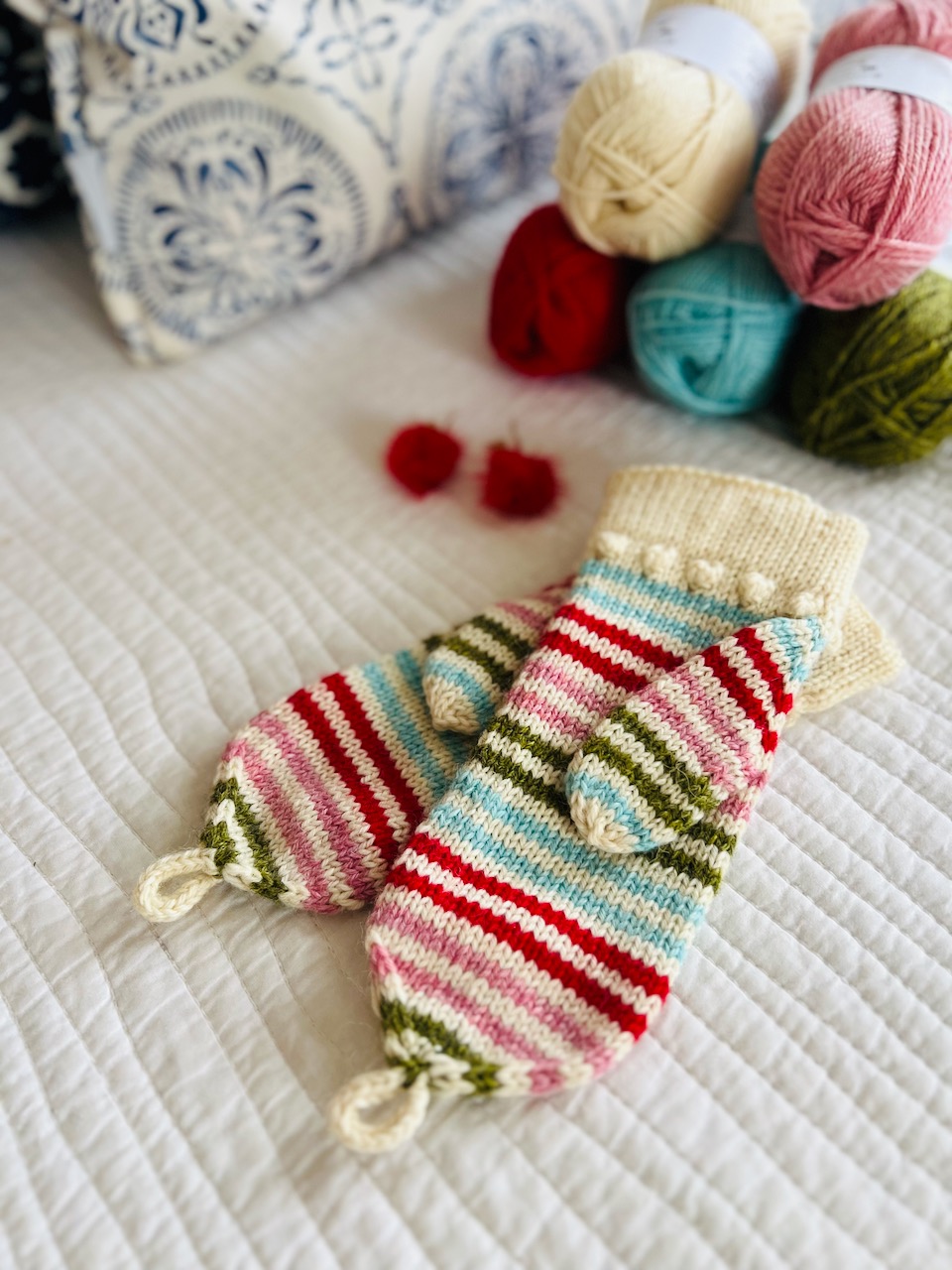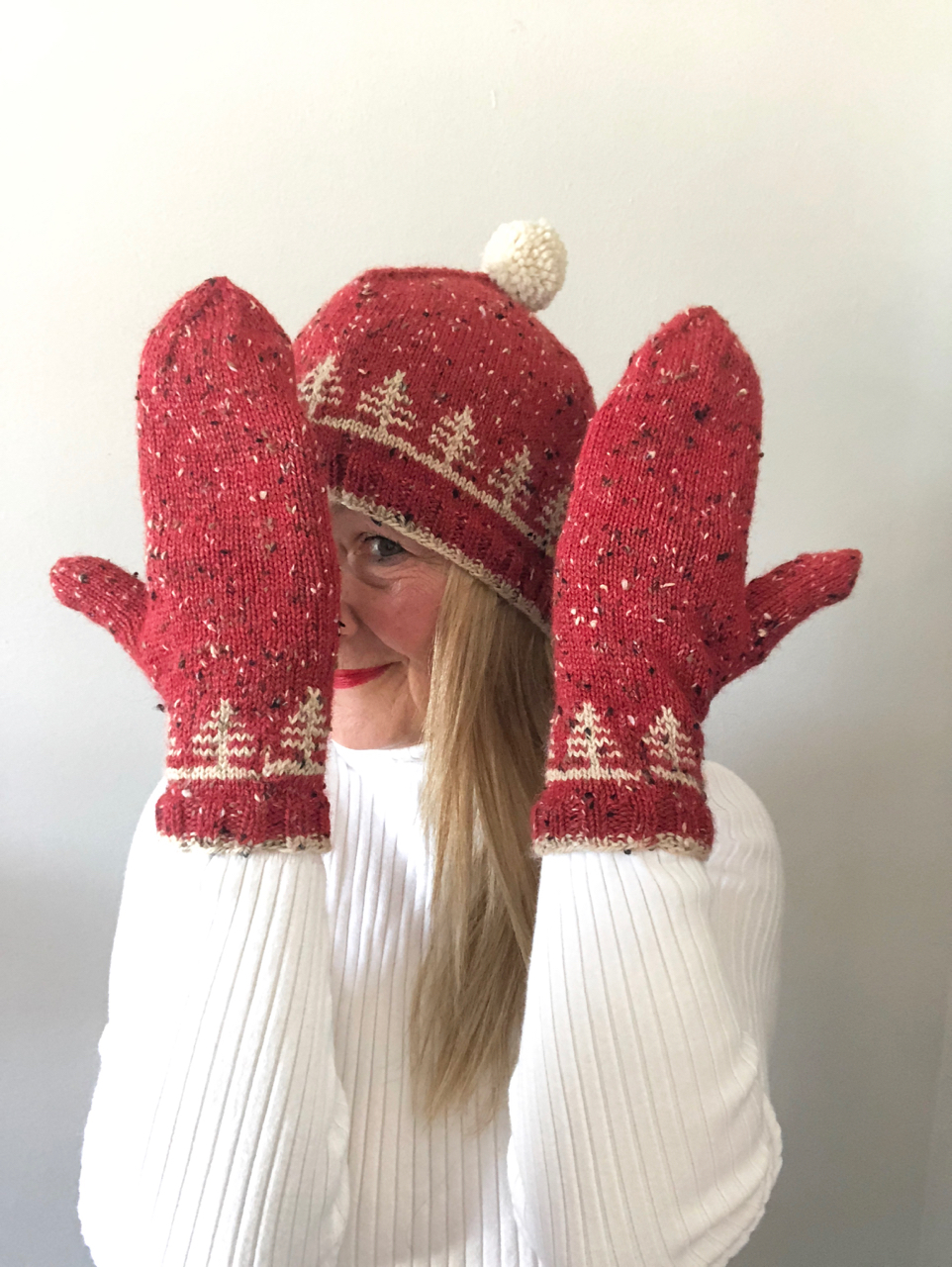The featured image is “Binary” by Christine Dumoulin. It is a free download available on Ravelry.
I’ve been thinking lately about the ways we communicate with knitting. When we wear our knitted pieces, we telegraph details about our personalities. We pass on information to others about our personal taste, aesthetic, perhaps our ethnicity, and subtle things about the way we like to live. A minimalist in a rigidly plain, impeccably crafted pullover sends a different set of signals than someone who chooses bright color, energetic texture or unusual form. Let’s go beyond fashion for a moment and look at the way our culture has used the code of knitting to communicate.
Wartime

Although it’s quaint to look back on community knitting for the greater good, knitting was an indispensable part of the war effort during WWI and WWII. It galvanized communities by allowing everyone to contribute to the task at hand and must have been a great salve to mothers, sisters, daughters and wives of those who were serving far away. While this was a noble and necessary venture, there were those who took knitting to the next level: espionage, smuggling and secret codes.

The stereotype of knitters and knitting as innocuous and benign created the perfect smokescreen for spies.
They would get little old ladies who sat in their houses that happened to have windows that overlooked railway marshaling yards and they would do their knitting and they’d drop one for a troop train, purl one for an artillery train and so on and so on, so it was that basic stuff.
MI6 chief Sir John Scarlett.
Knitting paraphernalia found a new usefulness during the wars. Homely balls of yarn carried secret messages while innocent knitting bags smuggled important schematics for weapons and materiel. Since knitting patterns and charts look undecipherable to untrained eyes (and even to some trained ones!) they formed a significant means of communicating sensitive information. In fact, knitting patterns were eventually banned in the UK during WWII in case they contained codes.
Isabell Kraemer uses Morse code in this subtle and stunning sweater, The Purl Code.
Perhaps the most appealing device for communication were garments themselves. Using knits and purls, dropped stitches and yarn overs, information could be silently passed. In the event of capture, the knitting could be easily ripped out, destroying any evidence.
Dr. Kristen Haring: “How to Knit a Popular History of Media”
“As part of a study of the cultural history of binary systems, Kristen Haring undertook an unusual hands-on project. Her talk will explain how her knitting of Morse code serves to engage a general audience in discussion of communications theory, binary systems, and the history of media. She will also recount the surprising ways that physical production deepened her historical understanding. The talk will highlight the rich answers that can come from explorations that are at once artistic and technical, popular and scholarly, historical and contemporary.”

It’s hard to deny the obvious parallels between knitting and binary code. Made up of two basic maneuvers, knit and purl, it’s easy to see knitting as a binary operation where knit = 0 and purl = 1 as in the seed stitch above. Extremely potent because of their simplicity, binary systems provide powerful analytics of math, logic, even religion and philosophy.
In a compelling talk given at the Center for Science, Technology, Medicine, & Society at the University of California, Berkeley, Dr. Kristen Haring weds the mechanics of binary systems to Morse Code. From there, she launches one of the most fantastic knitting projects in history. Dr. Haring worked Morse Code into several spectacular pieces in order to illustrate the relationships between thinking and doing in media. I highly recommend watching this 40 minute presentation.

The ribbed patterning on this gorgeous pullover is actually a distress call, “SOS” rendered in Morse Code.

In this wrap, Dr. Haring has used knitting to illustrate some of Jenny Holzer’s “Truisms”, a series of axioms penned by Holzer in the late 1970’s. Amazing.
Though you may not be fighting the hun or saving the Earth from attack by aliens, it’s interesting to look in the mirror and have a peek at the way the world views us!

















